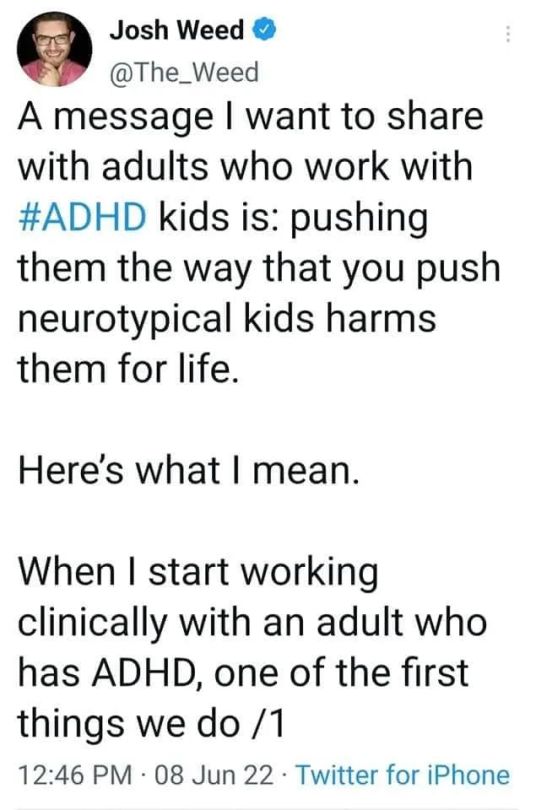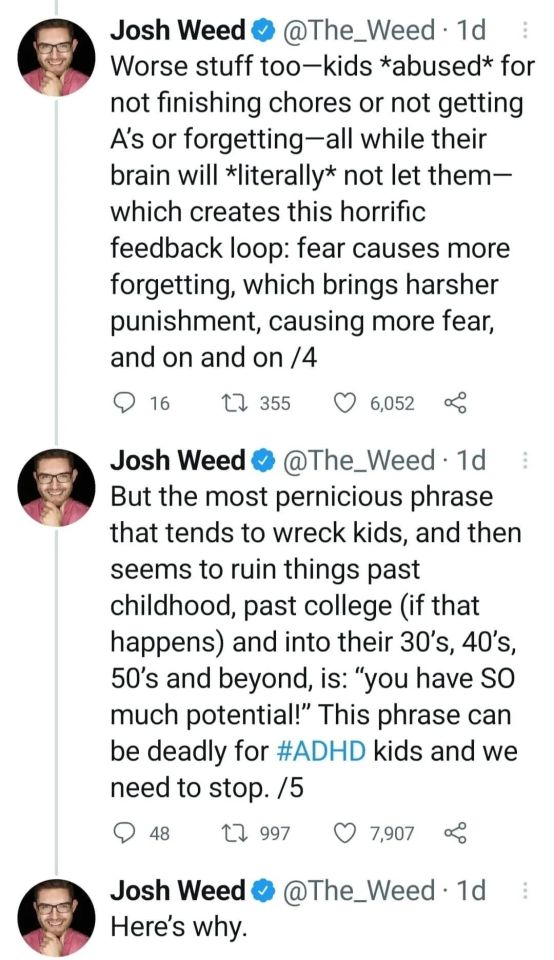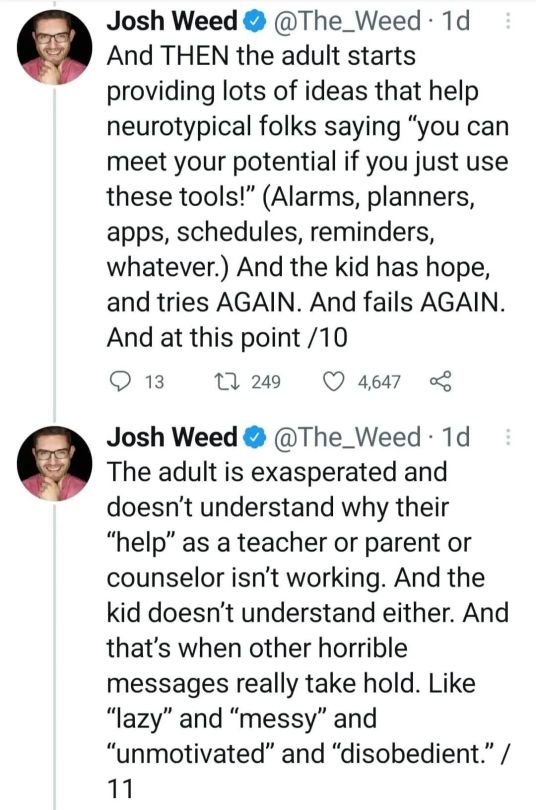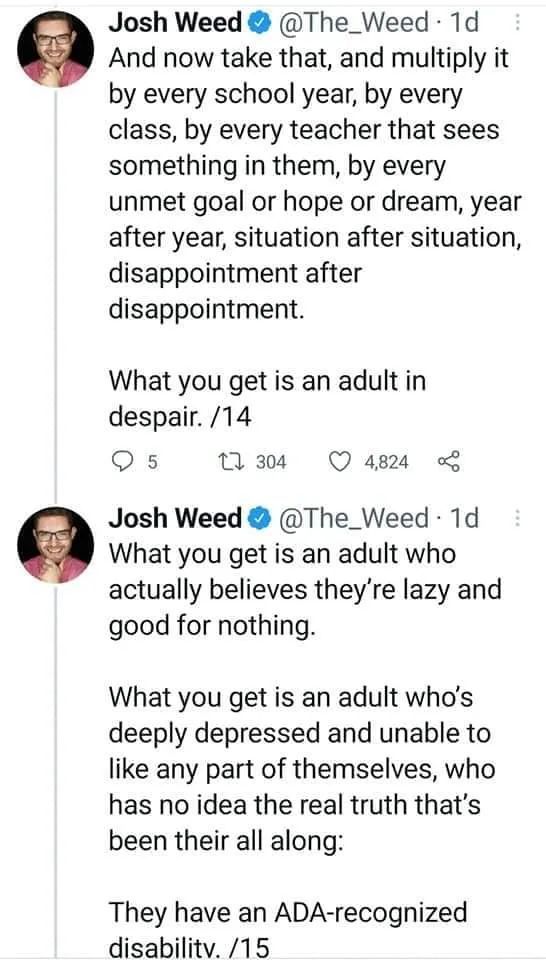I Know We're All Sick Of Self-care Being A Marketing Tactic Now, But I Don't Think A Lot Of Us Have Any
i know we're all sick of self-care being a marketing tactic now, but i don't think a lot of us have any other concept of self-care beyond what companies have tried to sell us, so i thought i'd share my favorite self-care hand out


brought to you by how mad i just got at a Target ad
More Posts from Fishability and Others
why isn't there much info about coathanger pain with POTS?? or at least why is this not more common knowledge? i don't think i've ever seen anyone talking about this. every time i've asked about it (+other POTS symptoms it comes with in my case) in chronic illness spaces people have suggested everything from fibro, MCAS, a CFS leak, a herniated disc, CCI, etc. but nobody ever said "coathanger pain."
but dysautonomia international posted a silly little graphic on their instagram and now i have my answers to why i was having a ton of symptoms that did suggest a herniated disc but there were no signs of disc herniation upon getting an MRI and for some reason it was triggered by working morning shift/having to be upright for a long time in the mornings. i would get excruciating, searing pain that feels pike a knife has been shoved into the base of my neck and the whole of my upper back would have this icy burning sensation. accompanied by me losing the ability to think straight, losing my coordination, and slurring my speech. i left work crying one morning because of how much pain i was in before i eventually came to the conclusion i couldn't do morning shifts.
that's coathanger pain. my spine is okay (i think...for now, anyway.) according to The Stuff they don't know what causes coathanger pain necessarily but they theorize it has to do with reduced blood flow to those areas of the body (which would track since POTS tends to involve blood pooling in the extremities and such.) it's also not exclusive to POTS and is associated with dysautonomia or orthostatic intolerance in general i think.
One example of the power of obtaining the autonomic history is the Coat Hanger Phenomenon. In people who have neurogenic orthostatic hypotension or orthostatic intolerance, they can complain of pain, or like a charley horse kind of sensation, in the back of the neck and shoulder areas in the distribution that’s like a coat hanger. And it goes away when the person is lying down. That’s an important symptom. And the way I explain it is that the muscles that control your head are tonically active, otherwise your head be falling down all the time. Tonically active. That means they’re using up oxygenated blood all the time. Well suppose you’re in a critical situation where there’s a drop in blood flow at the delivery of oxygenated blood to the head. In that situation these muscles are not getting enough oxygenated blood. They’re tonically active, so they’re producing lactic acid and you get a charley horse, just like you’d have a cramp anywhere else. It’s a skeletal muscle thing. So, I think when somebody complains of Coat Hanger Phenomenon, that’s a very important sign or symptom. And that is not invented. That’s a real phenomenon. It points to ischemia to the skeletal muscle holding your head up.
(Dr. Goldstein, The Dysautonomia Project)
worsening cognitive dysfunction, slurred speech, and worsening coordination because blood's not getting to my brain. bordering on emergency-room-level pain in my upper back and neck because not enough blood is getting to those parts of my body. got it.
anyway, i legit have NEVER seen this discussed until recently and i thought i should share.
Where to Start Your Research When Writing a Disabled Character
[large text: Where to Start Your Research When Writing a Disabled Character]
So you have decided that you want to make a disabled character! Awesome. But what's next? What information should you decide on at the early phrase of making the character?
This post will only talk about the disability part of the character creation process. Obviously, a disabled character needs a personality, interests, and backstory as every other one. But by including their disability early in the process, you can actually get it to have a deeper effect on the character - disability shouldn't be their whole life, but it should impact it. That's what disabilities do.
If you don't know what disability you would want to give them in the first place;
[large text: If you don't know what disability you would want to give them in the first place;]
Start broad. Is it sensory, mobility related, cognitive, developmental, autoimmune, neurodegenerative; maybe multiple of these, or maybe something else completely? Pick one and see what disabilities it encompasses; see if anything works for your character. Or...
If you have a specific symptom or aid in mind, see what could cause them. Don't assume or guess; not every wheelchair user is vaguely paralyzed below the waist with no other symptoms, not everyone with extensive scarring got it via physical trauma. Or...
Consider which disabilities are common in real life. Cerebral palsy, muscular dystrophy, stroke, cataracts, diabetes, intellectual disability, neuropathy, multiple sclerosis, epilepsy, thyroid disorders, autism, dwarfism, arthritis, cancers, brain damage, just to name a few.
Decide what specific type of condition they will have. If you're thinking about them having albinism, will it be ocular, oculocutaneous, or one of the rare syndrome-types? If you want to give them spinal muscular atrophy, which of the many possible onsets will they have? If they have Ehlers-Danlos Syndrome, which one out of the 13 different types do they have? Is their amputation below, or above the knee (it's a major difference)? Not all conditions will have subtypes, but it's worth looking into to not be surprised later. This will help you with further research.
If you're really struggling with figuring out what exact disability would make sense for your character, you can send an ask. Just make sure that you have tried the above and put actual specifics in your ask to give us something to work with. You can also check out our "disabled character ideas" tag.
Here are some ideas for a character using crutches.
Here are some ideas for a character with a facial difference (obligatory link: what is a facial difference?).
If you already know what disability your character is going to have;
[large text: If you already know what disability your character is going to have;]
Start by reading about the onset and cause of the condition. It could be acquired, congenital, progressive, potentially multiple of these. They could be caused by an illness, trauma, or something else entirely. Is your character a congenital amputee, or is it acquired? If acquired - how recently? Has it been a week, or 10 years? What caused them to become disabled - did they have meningitis, or was it an accident? Again, check what your options are - there are going to be more diverse than you expect.
Read about the symptoms. Do not assume or guess what they are. You will almost definitely discover something new. Example: a lot of people making a character with albinism don't realize that it has other symptoms than just lack of melanin, like nystagmus, visual impairment, and photophobia. Decide what your character experiences, to what degree, how frequently, and what do they do (or don't do) to deal with it.
Don't give your character only the most "acceptable" symptoms of their disability and ignore everything else. Example: many writers will omit the topic of incontinence in their para- and tetraplegic characters, even though it's extremely common. Don't shy away from aspects of disability that aren't romanticized.
Don't just... make them abled "because magic". If they're Deaf, don't give them some ability that will make them into an essentially hearing person. Don't give your blind character some "cheat" so that they can see, give them a cane. Don't give an amputee prosthetics that work better than meat limbs. To have a disabled character you need to have a character that's actually disabled. There's no way around it.
Think about complications your character could experience within the story. If your character wears their prosthetic a lot, they might start to experience skin breakdown or pain. Someone who uses a wheelchair a lot has a risk of pressure sores. Glowing and Flickering Fantasy Item might cause problems for someone photophobic or photosensitive. What do they do when that happens, or how do they prevent that from happening?
Look out for comorbidities. It's rare for disabled people to only have one medical condition and nothing else. Disabilities like to show up in pairs. Or dozens.
If relevant, consider mobility aids, assistive devices, and disability aids. Wheelchairs, canes, rollators, braces, AAC, walkers, nasal cannulas, crutches, white canes, feeding tubes, braillers, ostomy bags, insulin pumps, service dogs, trach tubes, hearing aids, orthoses, splints... the list is basically endless, and there's a lot of everyday things that might count as a disability aid as well - even just a hat could be one for someone whose disability requires them to stay out of the sun. Make sure that it's actually based on symptoms, not just your assumptions - most blind people don't wear sunglasses, not all people with SCI use a wheelchair, upper limb prosthetics aren't nearly as useful as you think. Decide which ones your character could have, how often they would use them, and if they switch between different aids.
Basically all of the above aids will have subtypes or variants. There is a lot of options. Does your character use an active manual wheelchair, a powerchair, or a generic hospital wheelchair? Are they using high-, or low-tech AAC? What would be available to them? Does it change over the course of their story, or their life in general?
If relevant, think about what treatment your character might receive. Do they need medication? Physical therapy? Occupational therapy? Orientation and mobility training? Speech therapy? Do they have access to it, and why or why not?
What is your character's support system? Do they have a carer; if yes, then what do they help your character with and what kind of relationship do they have? Is your character happy about it or not at all?
How did their life change after becoming disabled? If your character goes from being an extreme athlete to suddenly being a full-time wheelchair user, it will have an effect - are they going to stop doing sports at all, are they going to just do extreme wheelchair sports now, or are they going to try out wheelchair table tennis instead? Do they know and respect their new limitations? Did they have to get a different job or had to make their house accessible? Do they have support in this transition, or are they on their own - do they wish they had that support?
What about *other* characters? Your character isn't going to be the only disabled person in existence. Do they know other disabled people? Do they have a community? If your character manages their disability with something that's only available to them, what about all the other people with the same disability?
What is the society that your character lives in like? Is the architecture accessible? How do they treat disabled people? Are abled characters knowledgeable about disabilities? How many people speak the local sign language(s)? Are accessible bathrooms common, or does your character have to go home every few hours? Is there access to prosthetists and ocularists, or what do they do when their prosthetic leg or eye requires the routine check-up?
Know the tropes. If a burn survivor character is an evil mask-wearer, if a powerchair user is a constantly rude and ungrateful to everyone villain, if an amputee is a genius mechanic who fixes their own prosthetics, you have A Trope. Not all tropes are made equal; some are actively harmful to real people, while others are just annoying or boring by the nature of having been done to death. During the character creation process, research what tropes might apply and just try to trace your logic. Does your blind character see the future because it's a common superpower in their world, or are you doing the ancient "Blind Seer" trope?
Remember, that not all of the above questions will come up in your writing, but to know which ones won't you need to know the answers to them first. Even if you don't decide to explicitly name your character's condition, you will be aware of what they might function like. You will be able to add more depth to your character if you decide that they have T6 spina bifida, rather than if you made them into an ambiguous wheelchair user with ambiguous symptoms and ambiguous needs. Embrace research as part of your process and your characters will be better representation, sure, but they will also make more sense and seem more like actual people; same with the world that they are a part of.
This post exists to help you establish the basics of your character's disability so that you can do research on your own and answer some of the most common ("what are symptoms of x?") questions by yourself. If you have these things already established, it will also be easier for us to answer any possible questions you might have - e.g. "what would a character with complete high-level paraplegia do in a world where the modern kind of wheelchair has not been invented yet?" is much more concise than just "how do I write a character with paralysis?" - I think it's more helpful for askers as well; a vague answer won't be much help, I think.
I hope that this post is helpful!
Mod Sasza
Cosplayers, please don’t forget about those of us with disabilities at cons. Don’t push that walker or wheelchair out the way in artist’s alley because the owner of it isn’t touching it. Don’t give people funny looks for standing without their aids while they’re looking at things. Don’t get angry at the wheelchair user who has no choice but to go past your photographer because you’re taking up the entire space. Don’t kick out other cosplayers mobility aids. Keep space around you for disabled people, because we exist in your community and we just want to have fun like you do.
Blog Update ﮩ٨ـﮩﮩ٨ـ♡
Salutations all! Just letting everyone know that I've gone through all my posts and updated everything with alt text to make it more accessible. ˚ʚ♡ɞ˚
Also I now have everything up on my AO3 and will be posting on there alongside this blog. So if you prefer to read on there, thats also an option! о( ˶^▾^˶ )о
Please let me know if there is any tweaks, things I can do, or keep in mind to make this blog easier for you to use. I have a family member and close friend with dyslexia, so I've been trying to use emphasis and colors in my posts to assist with that.
In case anyone is interested, here are some references for blog, website, and graphic designing in a disability friendly way~







Housing is a privilege.
“Fewer than 5 percent of units have the features needed to accommodate a person with moderate mobility difficulties. The percentage of wheelchair-accessible units is even smaller; less than 1 percent of all units are equipped with features that would allow a wheelchair user to live independently.”
Marriage is a privilege.
“The [SSI] monthly maximum Federal amounts for 2023 are $914 for an eligible individual, $1,371 for an eligible individual with an eligible spouse.”
Minimum wage is a privilege.
“Section 14(c) of the Fair Labor Standards Act authorizes employers, after receiving a certificate from the Wage and Hour Division, to pay special minimum wages — wages less than the Federal minimum wage — to workers who have disabilities for the work being performed.”
We still need to fight for accessibility and equity for all disabled people.
Despite the ADA, equity is still out of reach.
apparently people are now purchasing thick water to make slimes with because of a trend on tiktok
thick water is for disabled people who can’t swallow properly. stores usually have extremely limited supplies of it.
please don’t buy thick water for fun or to make slime with. it’s literally the only way some disabled people can drink anything. It’s not a fucking toy
Blind people must save a lot on electricity.








A guide to designing wheelchair using characters!
I hope this helps anyone who's trying to design their oc using a wheelchair, it's not a complete guide but I tried my best! deffo do more research if you're writing them as a character
-
 mariniacipher reblogged this · 2 weeks ago
mariniacipher reblogged this · 2 weeks ago -
 himbos-hotline reblogged this · 2 weeks ago
himbos-hotline reblogged this · 2 weeks ago -
 simuran reblogged this · 2 weeks ago
simuran reblogged this · 2 weeks ago -
 blo6dym66n reblogged this · 2 weeks ago
blo6dym66n reblogged this · 2 weeks ago -
 blo6dym66n liked this · 2 weeks ago
blo6dym66n liked this · 2 weeks ago -
 babybatscreationsv2 liked this · 2 weeks ago
babybatscreationsv2 liked this · 2 weeks ago -
 ericaclaire17 liked this · 2 weeks ago
ericaclaire17 liked this · 2 weeks ago -
 ishigamii reblogged this · 2 weeks ago
ishigamii reblogged this · 2 weeks ago -
 queenpallascat reblogged this · 2 weeks ago
queenpallascat reblogged this · 2 weeks ago -
 queenpallascat liked this · 2 weeks ago
queenpallascat liked this · 2 weeks ago -
 077891st reblogged this · 2 weeks ago
077891st reblogged this · 2 weeks ago -
 hmmmkaaylah liked this · 2 weeks ago
hmmmkaaylah liked this · 2 weeks ago -
 fayfig reblogged this · 2 weeks ago
fayfig reblogged this · 2 weeks ago -
 fayfig liked this · 2 weeks ago
fayfig liked this · 2 weeks ago -
 sapphic-suchoripterus reblogged this · 2 weeks ago
sapphic-suchoripterus reblogged this · 2 weeks ago -
 thescienceofdeduction-sher liked this · 2 weeks ago
thescienceofdeduction-sher liked this · 2 weeks ago -
 inastormbestdressfearless reblogged this · 2 weeks ago
inastormbestdressfearless reblogged this · 2 weeks ago -
 snowcastlequeen liked this · 2 weeks ago
snowcastlequeen liked this · 2 weeks ago -
 deafdumbblind liked this · 2 weeks ago
deafdumbblind liked this · 2 weeks ago -
 almostpsyche reblogged this · 2 weeks ago
almostpsyche reblogged this · 2 weeks ago -
 muse-of-gods reblogged this · 2 weeks ago
muse-of-gods reblogged this · 2 weeks ago -
 muse-of-gods liked this · 2 weeks ago
muse-of-gods liked this · 2 weeks ago -
 whatiwantyoutobe liked this · 2 weeks ago
whatiwantyoutobe liked this · 2 weeks ago -
 3lzwth liked this · 2 weeks ago
3lzwth liked this · 2 weeks ago -
 silvamorte reblogged this · 2 weeks ago
silvamorte reblogged this · 2 weeks ago -
 silvamorte liked this · 2 weeks ago
silvamorte liked this · 2 weeks ago -
 catbunblue302 reblogged this · 2 weeks ago
catbunblue302 reblogged this · 2 weeks ago -
 speedynamo reblogged this · 2 weeks ago
speedynamo reblogged this · 2 weeks ago -
 allherstarryfays liked this · 2 weeks ago
allherstarryfays liked this · 2 weeks ago -
 pinkandorangesky liked this · 2 weeks ago
pinkandorangesky liked this · 2 weeks ago -
 snicksnack2 liked this · 2 weeks ago
snicksnack2 liked this · 2 weeks ago -
 sookiebrit reblogged this · 2 weeks ago
sookiebrit reblogged this · 2 weeks ago -
 sookiebrit liked this · 2 weeks ago
sookiebrit liked this · 2 weeks ago -
 prettypynklemonade liked this · 2 weeks ago
prettypynklemonade liked this · 2 weeks ago -
 dannieh366 reblogged this · 2 weeks ago
dannieh366 reblogged this · 2 weeks ago -
 dannieh366 liked this · 2 weeks ago
dannieh366 liked this · 2 weeks ago -
 glaxyjellyfish liked this · 2 weeks ago
glaxyjellyfish liked this · 2 weeks ago -
 owl-knight liked this · 2 weeks ago
owl-knight liked this · 2 weeks ago -
 boytoy4dad liked this · 2 weeks ago
boytoy4dad liked this · 2 weeks ago -
 alienembers liked this · 2 weeks ago
alienembers liked this · 2 weeks ago -
 maureenimnotatheatreperson reblogged this · 2 weeks ago
maureenimnotatheatreperson reblogged this · 2 weeks ago -
 eveandthemoon liked this · 2 weeks ago
eveandthemoon liked this · 2 weeks ago -
 harpywritesfic reblogged this · 2 weeks ago
harpywritesfic reblogged this · 2 weeks ago -
 residentweevil13 reblogged this · 2 weeks ago
residentweevil13 reblogged this · 2 weeks ago -
 residentweevil13 liked this · 2 weeks ago
residentweevil13 liked this · 2 weeks ago -
 tititilani reblogged this · 2 weeks ago
tititilani reblogged this · 2 weeks ago -
 rabentochter reblogged this · 2 weeks ago
rabentochter reblogged this · 2 weeks ago -
 strongerthanu liked this · 2 weeks ago
strongerthanu liked this · 2 weeks ago -
 goolsbygirl25 reblogged this · 2 weeks ago
goolsbygirl25 reblogged this · 2 weeks ago -
 juice1197 liked this · 2 weeks ago
juice1197 liked this · 2 weeks ago

74 posts







